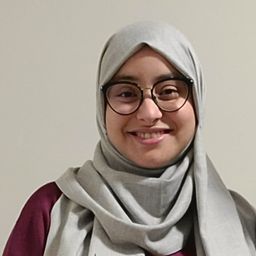Study of the FAM172A-AGO2 interaction, and its key role in co-transcriptional alternative splicing.
My Session Status
Finely regulated FAM172A-AGO2 interaction is key for co-transcriptional alternative splicing in the context of CHARGE syndrome.
Sephora Sallis1,3, Benoit Grondin1, Félix-Antoine Bérubé-Simard2 and Nicolas Pilon1,3.
1Laboratoire
de génétique moléculaire du développement, Département des sciences
biologiques, Université du Québec à Montréal (UQAM), Montréal, QC, Canada.
2Centre
de recherche de CHU de Québec-Université Laval, Axe Oncologie, Québec, QC,
Canada.
3Centre
d’Excellence en Recherche sur les Maladies Orphelines – Fondation Courtois
(CERMO-FC)
CHARGE Syndrome is a rare developmental disorder which affects 1/ 10 000 newborns and has a very complex clinical presentation. Heterozygous mutation of CHD7 (Chromodomain helicase DNA-binding domain) is currently the main genetic cause of CHARGE syndrome. This condition belongs to the neurocristopathies family (i.e., diseases of neural crest cell development), but underlying molecular mechanisms are not well understood. The Pr. Nicolas PILON’s Laboratory identified FAM172Aas a new candidate gene for CHARGE syndrome. Preliminary studies revealed that FAM172A could regulate the co-transcriptional alternative splicing machinery, through interaction with Argonaute 2 (AGO2), CHD7, DNA and RNA.
BiFC (Bimolecular Fluorescence Complementation) experiments confirmed a direct interaction between FAM172A and AGO2, that starts in the cytoplasm and may translocate into the nucleus, where AGO2 is implicated in alternative splicing events. In addition, mass spectrometry studies identified a potential phosphorylation site on FAM172A by the Casein Kinase II. Preliminary studies suggest that the translocation of FAM172A-AGO2 into nuclei is facilitated by the phosphorylation of FAM172A. Moreover, the functional significance of this interaction was validated by genetic interaction in mice. Indeed, by breeding Fam172aTp/Tpmice (hypomorphic allele of Fam172a) with a model where Ago2 is specifically Knocked Out (KO) in neural crest cells, we observed more severe CHARGE syndrome-like phenotypes.
Our current working model is that perturbations of FAM172A-mediated translocation of AGO2 into the nucleus lead to global dysregulation of transcription and alternative splicing in neural crest cells, thereby causing CHARGE syndrome.








Discussion